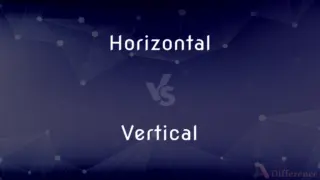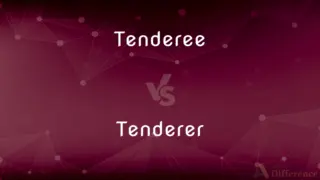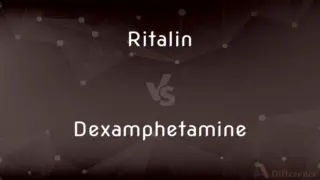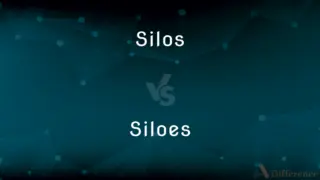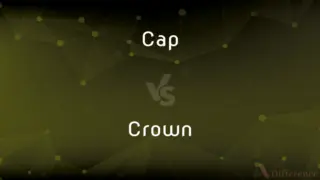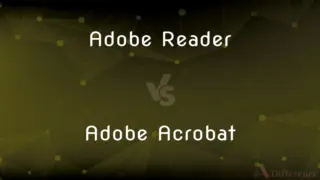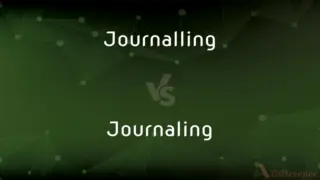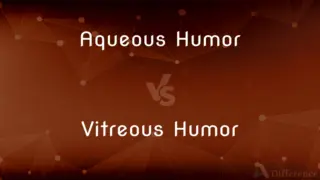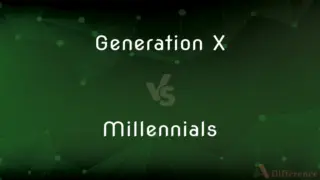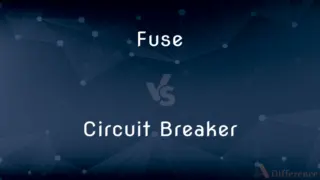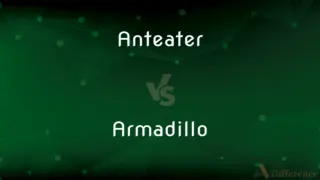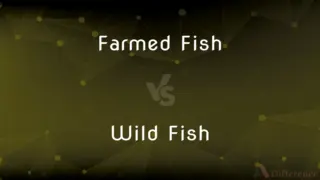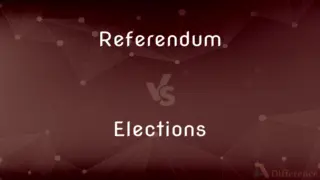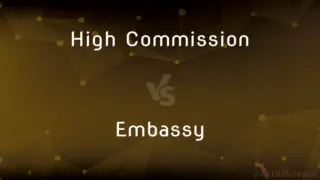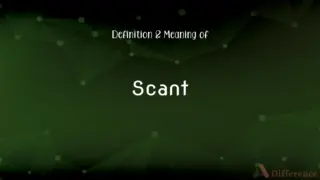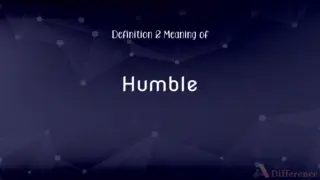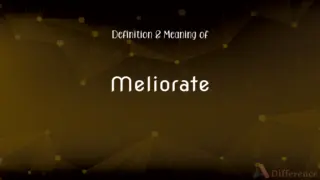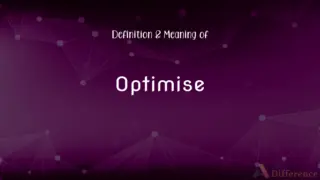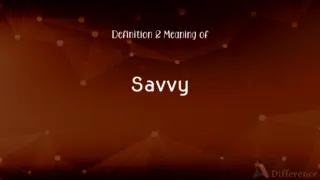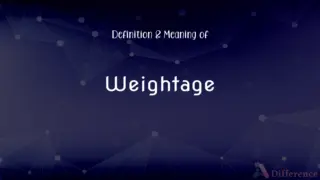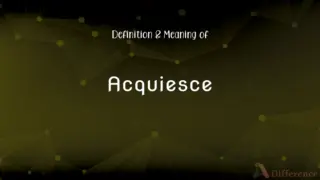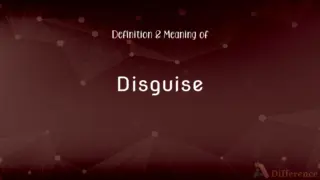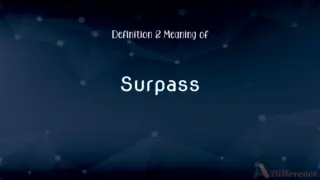Symbol vs. Type — What's the Difference?
By Tayyaba Rehman & Fiza Rafique — Updated on April 9, 2024
Symbols represent ideas or concepts through various forms, while types classify or group entities based on common characteristics.

Difference Between Symbol and Type
Table of Contents
ADVERTISEMENT
Key Differences
Symbols are representations, using imagery, characters, or objects to convey deeper meanings or ideas, often cultural or universal. Types, on the other hand, refer to categories or classifications that group items, concepts, or individuals based on shared attributes or qualities.
Symbols work at a conceptual level, transcending language barriers with their ability to convey complex ideas through simple visual forms. Types function as organizational tools, helping to understand and navigate the diversity of the world by categorizing entities according to their inherent or assigned characteristics.
The interpretation of symbols can vary widely depending on cultural, historical, or personal contexts, offering a richness in meaning that evolves over time. In contrast, types are more static, with their definitions and classifications based on specific criteria that are less subject to interpretation.
Symbols often carry emotional or philosophical weight, tapping into collective human experiences or emotions, such as peace, love, or danger. Types are utilitarian in nature, used for clarity and communication in various fields such as biology, sociology, and linguistics, without necessarily invoking an emotional response.
While symbols can be universal or widely recognizable, such as the heart symbolizing love, they can also be highly personal, with meanings specific to an individual or group. Types are generally agreed upon within specific disciplines or contexts, providing a common language for discussion and analysis.
ADVERTISEMENT
Comparison Chart
Definition
A mark, sign, or word that indicates, signifies, or is understood as representing an idea, object, or relationship.
A category of people or things having common characteristics.
Purpose
To convey complex ideas, emotions, or philosophies in a compact, visual, or representational form.
To classify and organize entities according to shared attributes or qualities for better understanding and communication.
Variability
Interpretations can vary widely across cultures and individuals.
Classifications are more consistent, based on specific criteria within disciplines.
Emotional Connection
Often carries emotional or philosophical significance.
Primarily utilitarian, without inherent emotional content.
Examples
The dove as a symbol of peace; the color red symbolizing love or danger.
Blood types in medicine; literary types in literature.
Compare with Definitions
Symbol
Symbols can be found in various cultures, each carrying unique meanings and significance.
The lotus flower is a powerful symbol in Eastern cultures, representing purity and enlightenment.
Type
A type categorizes entities based on common characteristics or attributes.
In biology, animal species are classified into types based on shared traits.
Symbol
A symbol is a mark or sign used to represent an idea, object, or relationship.
The peace sign is widely recognized as a symbol for peace and anti-war sentiment.
Type
Types are used in programming languages to define the nature of data, such as integers or strings.
In Python, the type() function can be used to determine the data type of a variable.
Symbol
In literature and art, symbols are used to convey deeper meanings and themes beyond the literal.
In The Great Gatsby, the green light symbolizes Gatsby's hopes and dreams for the future.
Type
In typography, a type refers to a category of fonts or print styles.
Times New Roman and Arial are different types of fonts used in printing and digital documents.
Symbol
National flags serve as symbols for countries, embodying their history, culture, and values.
The stars and stripes on the U.S. flag symbolize the country's fifty states and its original thirteen colonies.
Type
In psychology, personality types classify individuals into groups based on shared behavioral patterns.
The Myers-Briggs Type Indicator (MBTI) identifies 16 personality types based on cognitive functions.
Symbol
Symbols can be abstract, like mathematical symbols that represent operations or relationships.
The plus sign (+) symbolizes addition in mathematics.
Type
Types can refer to models or designs in manufacturing, such as car types.
Sedan, SUV, and hatchback are types of car models catering to different preferences and needs.
Symbol
A symbol is a mark, sign, or word that indicates, signifies, or is understood as representing an idea, object, or relationship. Symbols allow people to go beyond what is known or seen by creating linkages between otherwise very different concepts and experiences.
Type
A person or thing exemplifying the ideal or defining characteristics of something
She characterized his witty sayings as the type of modern wisdom
Symbol
A mark or character used as a conventional representation of an object, function, or process, e.g. the letter or letters standing for a chemical element or a character in musical notation
The chemical symbol for helium is He
The symbol r in Figure 5 represents a gene which is ineffective
Type
Characters or letters that are printed or shown on a screen
Bold type
Symbol
A thing that represents or stands for something else, especially a material object representing something abstract
The limousine was another symbol of his wealth and authority
Type
A design on either side of a medal or coin.
Symbol
Symbolize.
Type
An abstract category or class of linguistic item or unit, as distinct from actual occurrences in speech or writing.
Symbol
Something that represents something else by association, resemblance, or convention, especially a material object used to represent something invisible
The lamb is a symbol of innocence.
Type
Write (something) on a typewriter or computer by pressing the keys
He typed out the second draft
I'm learning to type
Symbol
An instance that typifies a broader pattern or situation
His striking out to end the rally was a symbol of everything that had gone wrong with the team over the past month.
Type
A number of people or things having in common traits or characteristics that distinguish them as a group or class:That type of car was popular in the 1970s. See Synonyms at kind.
Symbol
A printed or written sign used to represent an operation, element, quantity, quality, or relation, as in mathematics or music.
Type
A person or thing having the features of a group or class:He is the type of person that is bound to get into trouble.
Symbol
(Psychology) An object or image that an individual unconsciously uses to represent repressed thoughts, feelings, or impulses
A phallic symbol.
Type
An example or a model having the ideal features of a group or class; an embodiment:"He was the perfect type of a military dandy"(Joyce Cary).
Symbol
A character or glyph representing an idea, concept or object.
$ is the symbol for dollars in the US and some other countries.
Chinese people use word symbols for writing.
Type
A person regarded as exemplifying a particular profession, rank, or social group:a group of executive types; a restaurant frequented by tourist types.
Symbol
A thing considered the embodiment of a concept or object.
The lion is the symbol of courage; the lamb is the symbol of meekness or patience.
Type
A figure, representation, or symbol of something to come, such as an event in the Old Testament that is believed to foreshadow another in the New Testament.
Symbol
(linguistics) A type of noun whereby the form refers to the same entity independently of the context; a symbol arbitrarily denotes a referent. See also icon and index.
Type
(Biology)The type specimen, type species, or type genus, which serves as the basis for the name of a species, genus, or family.
Symbol
A summary of a dogmatic statement of faith.
The Apostles, Nicene Creed and the confessional books of Protestantism, such as the Augsburg Confession of Lutheranism are considered symbols.
Type
A small block of metal or wood bearing a raised letter or character on the upper end that leaves a printed impression when inked and pressed on paper.
Symbol
(crystallography) The numerical expression which defines a plane's position relative to the assumed axes.
Type
Such pieces considered as a group.
Symbol
(obsolete) That which is thrown into a common fund; hence, an appointed or accustomed duty.
Type
Printed or typewritten characters; print:Let's see how your letter looks in type.
Symbol
(obsolete) Share; allotment.
Type
A size or style of printed or typewritten characters; a typeface:a sans-serif type.
Symbol
(programming) An internal identifier used by a debugger to relate parts of the compiled program to the corresponding names in the source code.
Type
A pattern, a design, or an image impressed or stamped onto the face of a coin.
Symbol
(telecommunications) A signalling event on a communications channel; a signal that cannot be further divided into meaningful information.
Type
To write (something) using a typewriter.
Symbol
To symbolize.
Type
To input (something) manually on an electronic device, especially by using a keyboard.
Symbol
A visible sign or representation of an idea; anything which suggests an idea or quality, or another thing, as by resemblance or by convention; an emblem; a representation; a type; a figure; as, the lion is the symbol of courage; the lamb is the symbol of meekness or patience.
A symbol is a sign included in the idea which it represents, e. g., an actual part chosen to represent the whole, or a lower form or species used as the representative of a higher in the same kind.
Type
To assign to a category; classify or characterize:a political candidate who was typed as indecisive.
Symbol
Any character used to represent a quantity, an operation, a relation, or an abbreviation.
Type
To typecast:an actor afraid of being typed as a gangster.
Symbol
An abstract or compendium of faith or doctrine; a creed, or a summary of the articles of religion.
Type
To write with a typewriter or computer keyboard.
Symbol
That which is thrown into a common fund; hence, an appointed or accustomed duty.
They do their work in the days of peace . . . and come to pay their symbol in a war or in a plague.
Type
A grouping based on shared characteristics; a class.
This type of plane can handle rough weather more easily than that type of plane.
Symbol
Share; allotment.
The persons who are to be judged . . . shall all appear to receive their symbol.
Type
An individual considered typical of its class, one regarded as typifying a certain profession, environment, etc.
Symbol
An abbreviation standing for the name of an element and consisting of the initial letter of the Latin or New Latin name, or sometimes of the initial letter with a following one; as, C for carbon, Na for sodium (Natrium), Fe for iron (Ferrum), Sn for tin (Stannum), Sb for antimony (Stibium), etc. See the list of names and symbols under Element.
Type
An individual that represents the ideal for its class; an embodiment.
Symbol
To symbolize.
Type
A letter or character used for printing, historically a cast or engraved block.
Symbol
An arbitrary sign (written or printed) that has acquired a conventional significance
Type
(uncountable) Such types collectively, or a set of type of one font or size.
Symbol
Something visible that by association or convention represents something else that is invisible;
The eagle is a symbol of the United States
Type
Text printed with such type, or imitating its characteristics.
The headline was set in bold type.
Type
(taxonomy) Something, often a specimen, selected as an objective anchor to connect a scientific name to a taxon; this need not be representative or typical.
Type
Preferred sort of person; sort of person that one is attracted to.
We can't get along: he's just not my type.
He was exactly her type.
Type
(corpus linguistics) A word that occurs in a text or corpus irrespective of how many times it occurs, as opposed to a token.
Type
(theology) An event or person that prefigures or foreshadows a later event - commonly an Old Testament event linked to Christian times.
Type
(computing theory) A tag attached to variables and values used in determining which kinds of value can be used in which situations; a data type.
Type
(fine arts) The original object, or class of objects, scene, face, or conception, which becomes the subject of a copy; especially, the design on the face of a medal or a coin.
Type
(chemistry) A simple compound, used as a mode or pattern to which other compounds are conveniently regarded as being related, and from which they may be actually or theoretically derived.
The fundamental types used to express the simplest and most essential chemical relations are hydrochloric acid, water, ammonia, and methane.
Type
(mathematics) A part of the partition of the object domain of a logical theory (which due to the existence of such partition, would be called a typed theory). (Note: this corresponds to the notion of "data type" in computing theory.)
Categorial grammar is like a combination of context-free grammar and types.
Type
A symbol, emblem, or example of something.
Type
To put text on paper using a typewriter.
Type
To enter text or commands into a computer using a keyboard.
Type
To represent by a type, model, or symbol beforehand; to prefigure.
Type
To furnish an expression or copy of; to represent; to typify.
Type
To categorize into types.
Type
The mark or impression of something; stamp; impressed sign; emblem.
The faith they have in tennis, and tall stockings,Short blistered breeches, and those types of travel.
Type
Form or character impressed; style; semblance.
Thy father bears the type of king of Naples.
Type
A figure or representation of something to come; a token; a sign; a symbol; - correlative to antitype.
A type is no longer a type when the thing typified comes to be actually exhibited.
Type
That which possesses or exemplifies characteristic qualities; the representative.
Since the time of Cuvier and Baer . . . the whole animal kingdom has been universally held to be divisible into a small number of main divisions or types.
Type
The original object, or class of objects, scene, face, or conception, which becomes the subject of a copy; esp., the design on the face of a medal or a coin.
Type
A raised letter, figure, accent, or other character, cast in metal or cut in wood, used in printing.
Type
A simple compound, used as a model or pattern to which other compounds are conveniently regarded as being related, and from which they may be actually or theoretically derived.
Type
To represent by a type, model, or symbol beforehand; to prefigure.
Type
To furnish an expression or copy of; to represent; to typify.
Let us type them now in our own lives.
Type
A subdivision of a particular kind of thing;
What type of sculpture do you prefer?
Type
A person of a specified kind (usually with many eccentricities);
A real character
A strange character
A friendly eccentric
The capable type
A mental case
Type
(biology) the taxonomic group whose characteristics are used to define the next higher taxon
Type
Printed characters;
Small type is hard to read
Type
A small metal block bearing a raised character on one end; produces a printed character when inked and pressed on paper;
He dropped a case of type, so they made him pick them up
Type
All of the tokens of the same symbol;
The word `element' contains five different types of character
Type
Write by means of a keyboard with types;
Type the acceptance letter, please
Type
Identify as belonging to a certain type;
Such people can practically be typed
Common Curiosities
In what contexts are types used?
Types are used in various contexts, including scientific classification, programming, manufacturing, and literary analysis, to organize and categorize entities for better understanding and communication.
Can the meaning of a symbol change over time?
Yes, the meaning of symbols can evolve over time due to cultural shifts, historical contexts, and changes in societal values.
What defines a type?
A type is a category or classification that groups entities based on shared characteristics or attributes.
What is a symbol?
A symbol is a representation that signifies an idea, concept, or other abstract entities through a visual form, object, or sign.
How do symbols convey meaning?
Symbols convey meaning through cultural, historical, or personal associations that transcend language, often representing complex ideas or emotions.
How do types aid in communication?
Types aid in communication by providing a clear and consistent way to refer to groups of entities with common characteristics, facilitating understanding and discussion.
Is it possible for an entity to belong to multiple types?
Yes, an entity can belong to multiple types if it shares characteristics with different categories, especially in complex classification systems.
Are types fixed or can they evolve?
While types are based on specific criteria, they can evolve as new information emerges or as understanding deepens, leading to reclassification or the creation of new categories.
How do programming languages utilize types?
Programming languages utilize types to define the nature of data, such as integers, strings, or booleans, ensuring that operations on data are performed correctly and efficiently.
Do symbols have a universal meaning?
Some symbols may have near-universal recognition and meaning, but many symbols can vary significantly across different cultures or individual interpretations.
Why are types important in scientific research?
Types are crucial in scientific research for organizing information, facilitating clear communication, and establishing a common understanding of subjects under study.
What is the significance of personality types in psychology?
Personality types in psychology provide a framework for understanding and categorizing human behavior patterns, aiding in personal development and interpersonal relationships.
How are symbols used in art and literature?
In art and literature, symbols are used to convey deeper meanings, themes, and emotions, often allowing for a richer interpretation beyond the literal content.
Can an individual's understanding of a symbol differ from its general interpretation?
Yes, an individual's cultural background, personal experiences, and emotional state can influence their interpretation of a symbol, leading to unique personal meanings.
What role do symbols play in cultural identity?
Symbols play a key role in cultural identity, representing shared beliefs, values, and history, and fostering a sense of belonging and community among members.
Share Your Discovery

Previous Comparison
Hex vs. Witch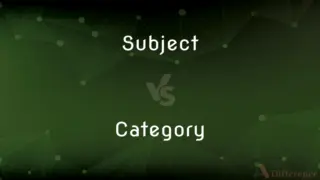
Next Comparison
Subject vs. CategoryAuthor Spotlight
Written by
Tayyaba RehmanTayyaba Rehman is a distinguished writer, currently serving as a primary contributor to askdifference.com. As a researcher in semantics and etymology, Tayyaba's passion for the complexity of languages and their distinctions has found a perfect home on the platform. Tayyaba delves into the intricacies of language, distinguishing between commonly confused words and phrases, thereby providing clarity for readers worldwide.
Co-written by
Fiza RafiqueFiza Rafique is a skilled content writer at AskDifference.com, where she meticulously refines and enhances written pieces. Drawing from her vast editorial expertise, Fiza ensures clarity, accuracy, and precision in every article. Passionate about language, she continually seeks to elevate the quality of content for readers worldwide.

